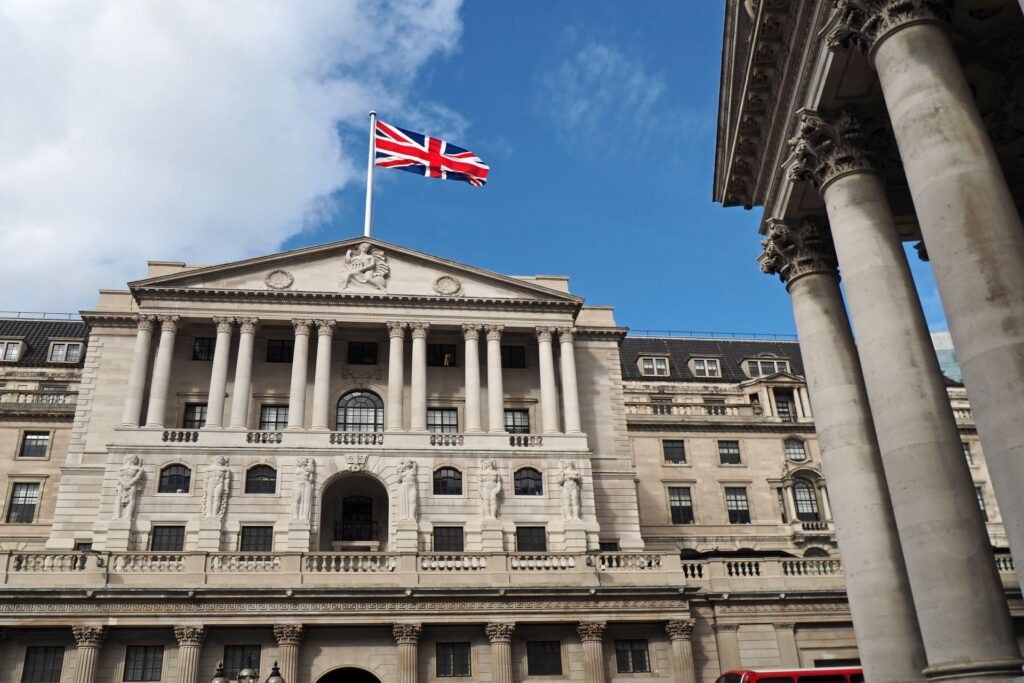The basis of the banking system in England is formed by commercial banks or the so-called deposit banks. The vast majority of financial transactions are carried out in 6 of the world’s largest clearing banks in London — members of the London Clearing House.
The first four of them — the Big Four — are the dominant financial institutions of the state. These include National Westminster Bank, a British universal bank Barclays, Midland Bank PLC, retail and commercial Lloyds Bank PLC.
Deposit banking
Deposit banks in England are also called retail banks. They got this name because their clients are individuals in addition to legal entities as industrial, commercial, and financial structures. Accordingly, they perform both large-scale and small-scale banking operations, covering virtually all banking services.
The main active operations of deposit banks are traditional accounting, crediting, and investments in securities. The most common crediting form in the UK is an overdraft. Also, these banks traditionally provide customers with short-term loans to fund working capital in the trade field.
Banks invest their capital as medium and long-term funding in shares of industrial and agricultural companies and financial houses. They create their branches to provide medium-term funding for the purchase of durable goods and are also actively introducing themselves into the activity spheres of foreign banks by opening their branches in different countries. In the 60s, deposit banks became the main players in the money market with the traditional functions of accounting houses.
Merchant banks and Accepting houses
Unlike “retail” institutions, the rest of the UK banks, apart from savings organisms, are merchant, or “wholesale”, financial institutions. They operate primarily with legal entities — companies and institutions — rather than individuals.
Merchant banks are descended from merchant firms that specialized in accepting bills of exchange. Their activity was based on excellent knowledge of the solvency of individual firms in different parts of the world. The takeover activities proved to be so profitable that in the end these firms abandoned the trade, turned into institutions specializing in the provision of acceptance credits, and were called accepting houses.
Over time, the accepting houses have expanded their international activities. They began to place on the London market long-term bonds of foreign governments and companies bought by investors in the UK and other countries. Gradually London became the main international long-term funding center.
After the global economic crisis of 1929-1933, which led to a reduction in international trade and financial transactions, accepting houses or chambers began to expand their presence in the national market. This applies to acceptance and placement operations.

Modern accepting chambers combine international transactions with activities in the national market for funding capital. For most of them, the latter is predominant.
Accepting chambers are a group of the largest and most influential commercial banks. That is, the commercial “elite”. They are members of the Accepting House Committee and the Association of Accepting House Issuers along with some of the largest commercial banks.
Merchant banks, even the largest ones, carry out a small volume of transactions in comparison with the “Big Four”. However, they play an important role in certain banking areas. They carry out various international financial and credit transactions and provide a wide range of services to industrial and commercial corporations.
All commercial banks, despite certain differences in their activities, are actively involved in four areas. They are emission activities and organizational consulting services to corporations, international transactions, fiduciary (trust) operations, and traditional banking like granting credits, acceptance of savings, and other acceptance operations.
Accounting houses
Until the 1980s, accounting houses were the only lending institutions in the UK that were eligible for funding from the Bank of England. Thanks to this privilege, they played a special role in the banking system of the United Kingdom.
Accounting houses got their name because of their traditional specialization in the bills of exchange accounting. Along with promissory notes, the accounting department has long been selling and buying short-term government bonds and liabilities of local authorities. Loans are the main source of accounting resources. These are mainly loans daily and on-demand.
Trusted savings banks
Since 1986, there in the UK has been founded a single joint stock Trust Savings Bank. He brought together trust savings banks, which emerged in the nineteenth century as savings banks. This name comes from the fact that they were run by proxies appointed by the local authorities.
Since the late 1970s strictly expanded the banking activities of these institutions, and above all loan granting. In 1976, a law was passed allowing trustees to grant loans to both corporations and individual borrowers. Trust Savings Bank provides for all the main services of analogical commercial financial organs.
The National Savings Bank (NSB) was founded in 1861 as the State Savings Bank. The postal division is used as its branches. By the number of deposited funds, the NSB is one of the largest savings institutions in the world.
The presence of foreign capital
Foreign banking entities are UK-based funding institutions with foreign capital. They are the main competitors of the British banking system. However, the Bank of England welcomes their opening for two reasons.
This strengthens London’s position as a global financial center. Also, foreign banks bring to the London market certain national banking features, which are gradually being adopted by British banks.
For example, in the 60s, American banks introduced on the London market into circulation such a new type of securities as certificates of deposit, which were subsequently issued by British banks.

Foreign banking subsidiaries began opening offices in London in the 19th century. Since the late 1950s, the number of foreign presence in the UK has increased dramatically. If at the end of the 1950s there were about 80 of them, then at the end of the 1990s — more than 150, and now — more than 450. Most foreign branches are open in London, others — in Birmingham, Liverpool, and other countries.
American banks are the largest group of foreign entities, followed by Japanese, French and German representative banking offices. A separate group is made up of banking consortia, the capital of which belongs to banks in different countries.
Foreign branches specialize in the euro market, provide loans to foreign and multinational companies, and are funding foreign trade. They consult companies on foreign investment and other issues arising in the course of various international transactions. They provide local banks with economic and financial information and consult on choosing partners.
Bank deposits
The main types of passive operations: demand lending, term, and savings funds. Demand deposits play a special role in the life of the country’s economy. They are the basis for the issuance of checks and other credit circulation instruments. Since the early 1980s, the practice of paying interest on demand deposits became widespread.
Demand funds are credited to current accounts. On their basis, banks provide various services. In the 1960s, the so-called budget accounts appeared in Great Britain, closely related to current accounts. The client calculates the number of annual expenses for utilities, subscriptions, vacation, insurance payments and divides it into 12 parts.
The received amount is monthly transferred from the current account to the budget account according to one-time customer order. A banker pays for these expenses from budget funds. If the client does not have enough money, the banker can provide him with a loan.
Savings deposits are designed to mobilize minimal savings. You can open a savings account even for a small amount of 25p. The bank starts paying interest when the amount in the savings account reaches a certain minimum.
Crediting
In the post-war period, the scope of providing medium and long-term loans from 2 to 7 years, and sometimes up to 20 years, has noticeably increased. The extension of the loan term is primarily carried out by the overdraft extension.
Formally, an overdraft is a demand loan. Banks are extending it to large clients from year to year, turning the overdraft into medium and even long-term loans.

Lending opportunities of deposit banks are expanding along with the extension of the terms. Since the 1960s, deposit banking has been providing for the export of machinery and equipment. Foreign importers receive such loans directly. This allows them to pay for English exports.
Lending is carried out under government guarantees. Banks, by lending to foreign trade, encroach on the traditional sphere of activity of commercial banks.
Since the 1980s, the provision of loans to the population for the purchase and construction of houses and apartments on mortgages and life insurance policies has expanded significantly.
Extending the terms and expanding lending opportunities is one of the ways to scale the range of deposit banks’ services, their penetration into the activities of other financial institutions.
At the same time, competition from these structures is steadily increasing. Another way of intruding into the sphere of activities of other credit and financial institutions is the creation of branches, offices, representative offices, and specialized subsidiaries.








